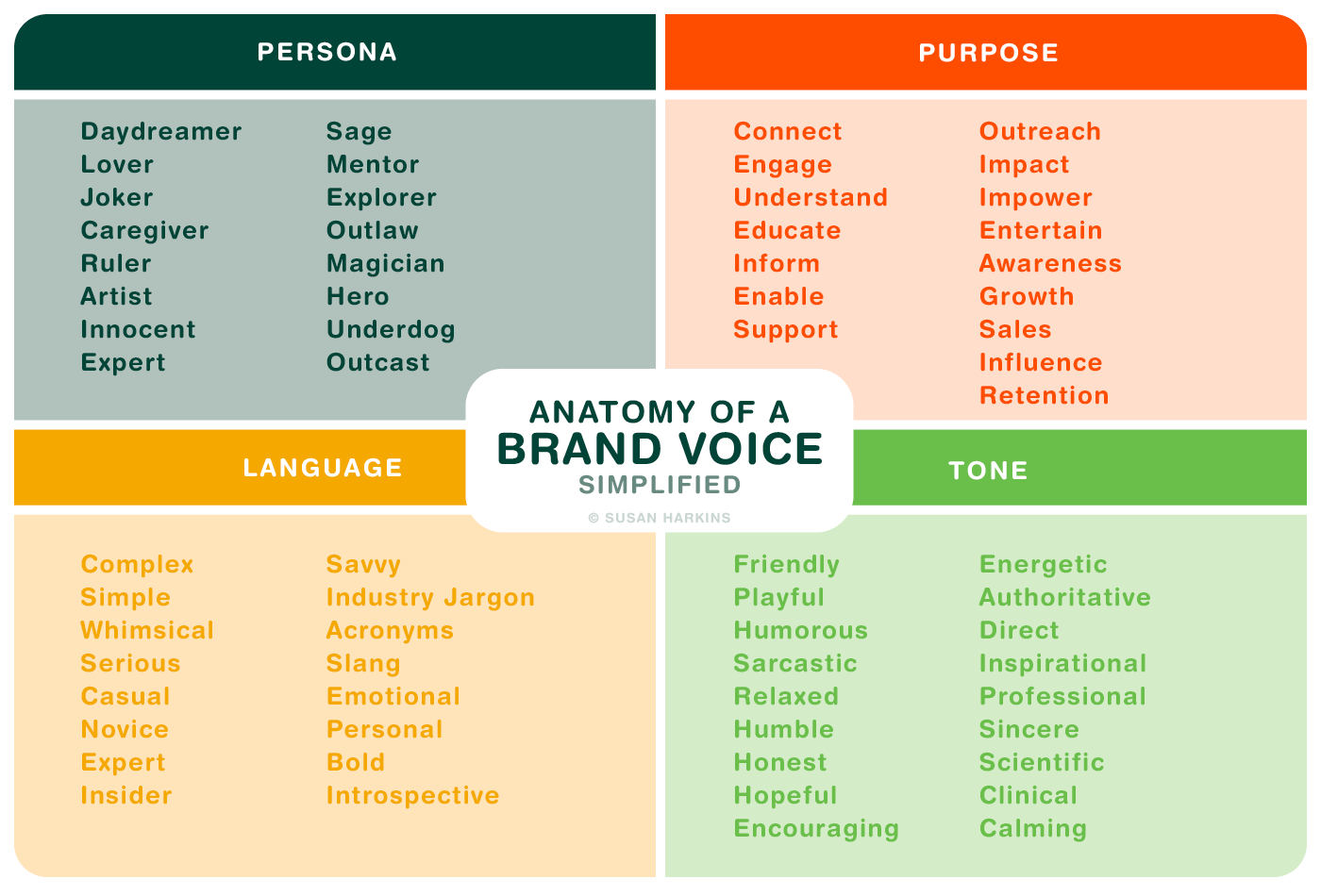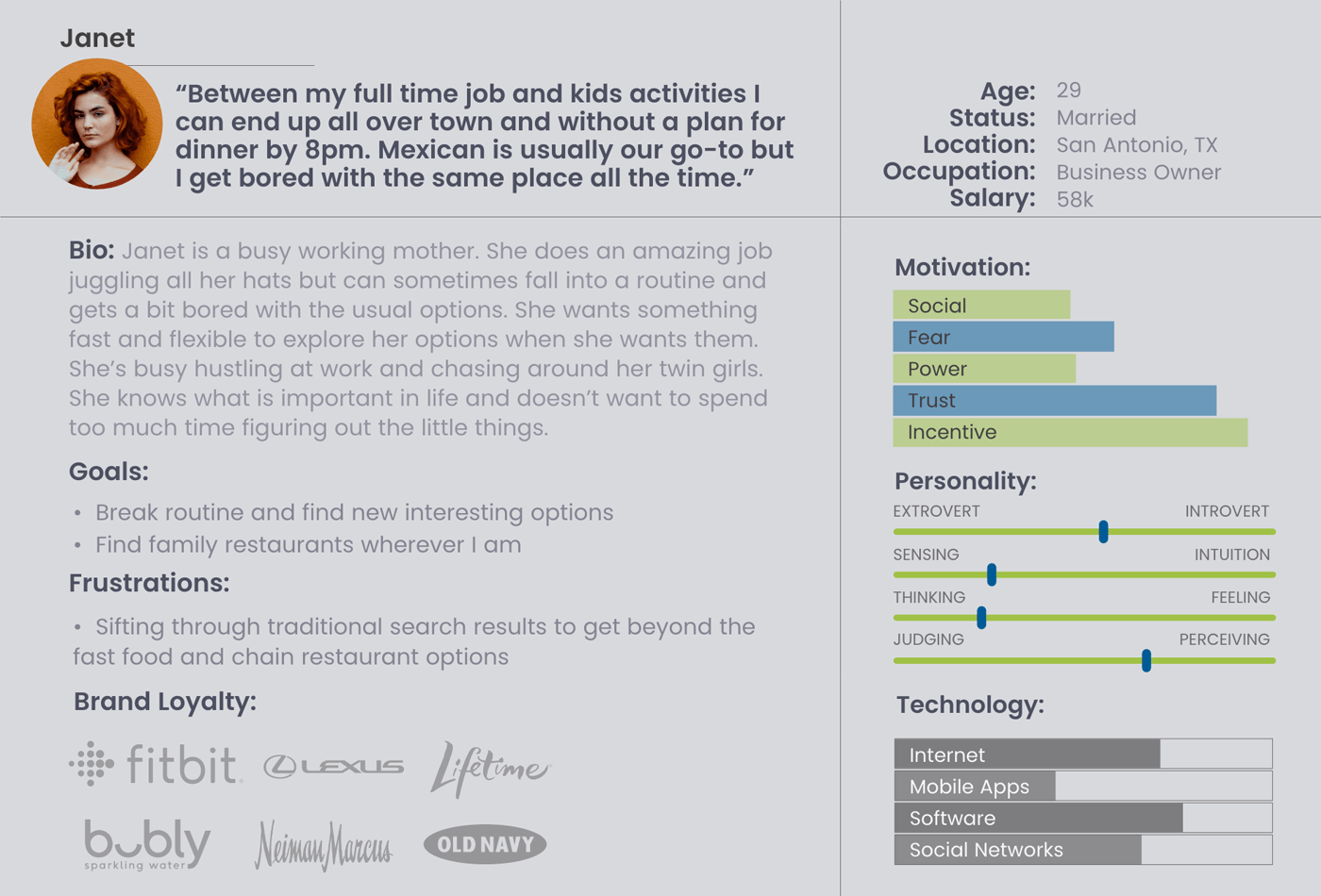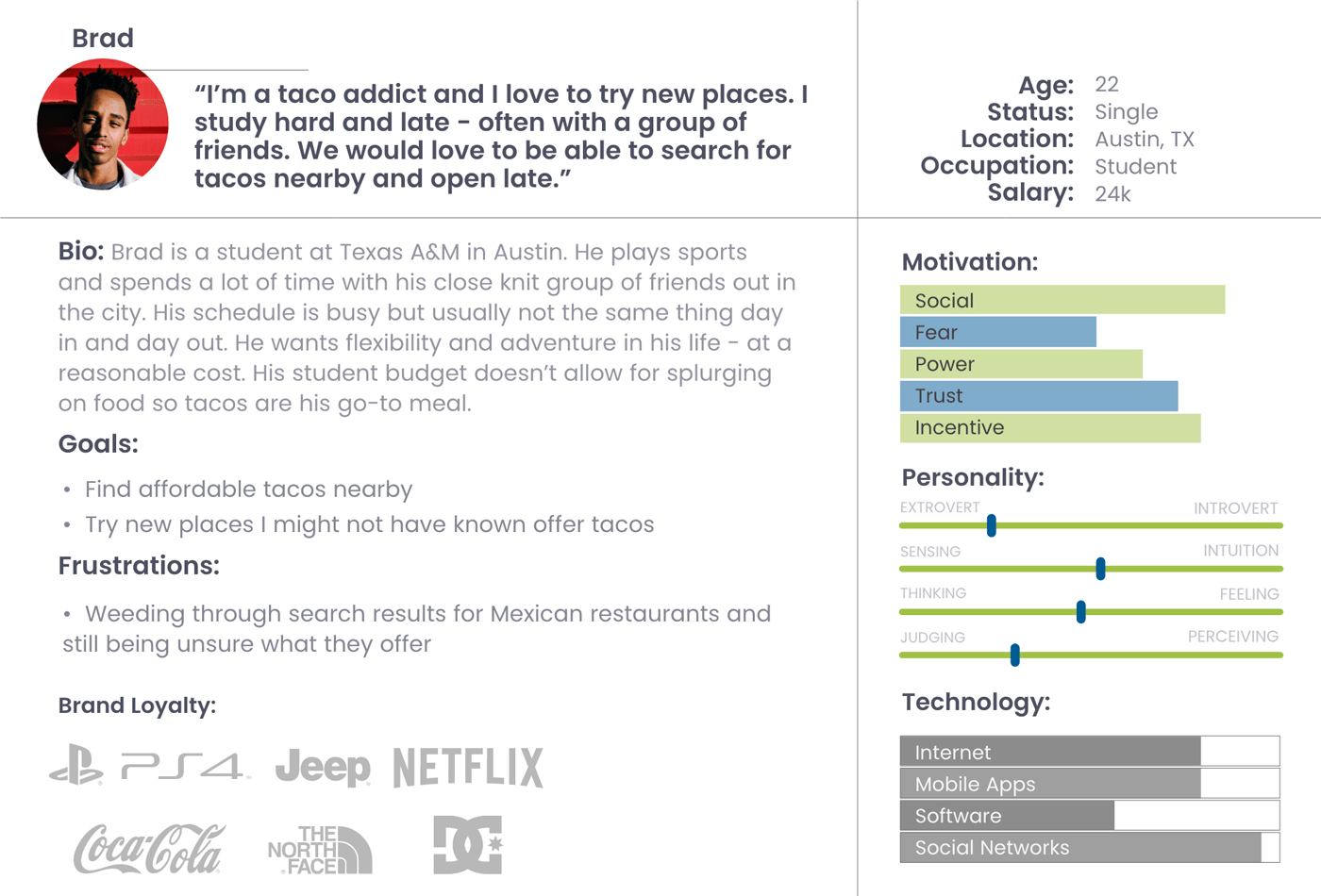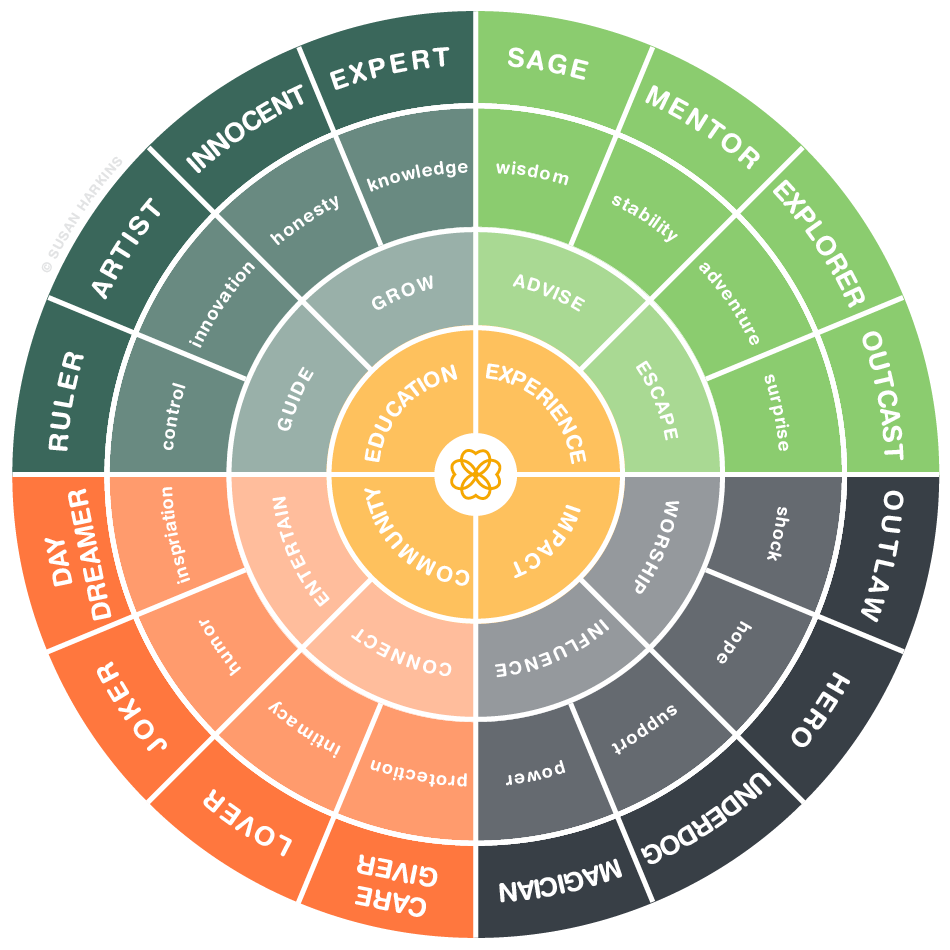
What is Brand Voice and Why Does it Matter?
Brand voice is the unique way that a company speaks and communicates with its customers. It’s an essential part of any company’s identity and it can influence how people perceive the brand. Developing a strong brand voice helps to create a consistent experience for customers, builds customer loyalty, and sets your company apart from the competition.
A brand’s voice is more than just the words used in content; it also encompasses tone, style, and the overall personality of the company. It’s important to take time to develop your brand voice so that it reflects your company values and resonates with your target audience. In this article, we explore what brand voice means, why it matters, and how you can develop an effective tone of voice for your business.

Define Your Mission Statement & Find Your Unique Value Proposition
Before you can be loved you must love yourself. Or so they say – the first step is to define who the brand is. A mission statement is a powerful tool for any business. It can help define the purpose of the business, guide decisions, and communicate to stakeholders what the company stands for and where it is headed. A mission statement should be unique to each organization and should reflect its values, ethics, and goals. Mission statements are public messages that explain your brands greater plan. They tend to be more business focused and have a serious tone to them.
For example Ember Mug’s mission statement is:
“to harness the power of temperature control to transform how the world eats, drinks and lives.”
A unique value proposition (UVP) is a statement that describes how your product or service is different from your competitors and why customers should choose you. This helps a company stand out from competitors by clearly communicating what makes them different. It also helps customers understand why they should choose your product or service over others. It helps to create an emotional connection with customers by highlighting the benefits of using your product or service.
For example Ember Mug’s unique value proposition is:
“Ember’s patented technology allows you to set the precise temperature of your hot beverage, so you can enjoy your drink from the first sip to the last drop.”
Creating a unique value proposition can be a daunting task, but it doesn’t have to be. With the right approach, you can determine what makes you stand out from the competition and create a compelling value proposition that resonates with your target audience. One simple way to begin defining your UVP is using a FAB statement. Yes more acronyms – a FAB statement is really more of a brainstorming exercise where you list Features, Advantages, and Benefits for each of your products or services. This will give you a nice list of keywords associated with your brand offerings you can include with your language guide and use to build your UVP statement.

Get to Know Your Audience & Understand Demographics
Knowing your audience and understanding their regional demographic is key to creating successful content. Marketers need to be aware of the cultural impact of their content and how it will be received by different audiences. Audience research is an essential part of any successful marketing strategy, as it helps marketers understand who they are targeting and how best to reach out to them. By taking into account regional demographic importance, you can ensure that your brand’s content is relevant and engaging for your target audience.
By leveraging population based regional demographic insights, you can gain a better understanding of audiences and create content that resonates with them authentically. This will help you create more effective campaigns that are tailored to the needs of your target market whether it be your tried-and-true loyal customer base or a new emerging market. But don’t worry, a simple look at the basic breakdown of your current customer demographics or defining basic target customer demographics for a specific market is enough research to get started developing an authentic brand voice. Social media audiences are a good place to start since most will give you age, gender, and location for your current fanbase and if you’re well versed with Facebook (Meta) audience data and know what a look-alike audience is you’re ahead of the curve. Collect some data and then move on to step 3.
It’s not just demographics and slang you need to consider – it’s actual location and lifestyle. Be mindful of your niche and demographic lifestyle needs. Are they likely to be vision impaired? Is English their second language? Do they take public transportation? Understand their habits to understand their lives and where you fit in. Are you a B2B company? Find the business district of a city you want to target and understand what the atmosphere of the surrounding neighborhoods are to further narrow your focus. There are 1,000 different ways to dive into analyzing your ideal target demographic for lifestyle, emotion and overall persona, follow a path that makes sense for your brand and define your terms.

Get to Know Your Competition & Analyzing Content Strategies
Understanding your competitors’ content strategies is essential for any business looking to stay ahead of the competition. By conducting regular competitor analysis and research, you can gain insights into their strategy and communication style, as well as uncover opportunities to create content that stands out from the crowd. Don’t worry, while you could go very in depth with competitor analysis – and you may want to – in this case keeping it simple works best and basic internet research skills are all that are needed. If you manage a brand that would benefit from a larger market analysis of core competitors there are a lot of companies offering in-depth data services to analyze all areas of competitors business efforts beyond language and marketing.
If you are a new brand and have not yet identified your key competitors – stop now and do so. Some brief online searching should provide you with a short list of competitors in your space that align with your purpose and aesthetic. Once you’ve developed your list spend time researching their brand identity and voice. What do their ads and social posts look like? What type of voice do they have one their website? What about their social feed? Do they share client content? Do they speak directly to their audience? Take note of what you’re seeing that resonates – and where they are lacking – as well as some of their specific keywords you may notice.
With a thorough understanding of your competitors’ approach to content marketing, you can develop a copywriting strategy that will help you differentiate yourself from them while still providing value to your common target audience. If you’re an already established brand apply the same research tactics to your own content to determine which areas need improvement in order to better serve your customers and stand out amongst competitors in the market.
Example:
Sally researched her competitors and noticed they share a lot of customer content unboxing products – something her company has never done – but the competitors packaging does not look upscale or exciting and the tone of their messaging is professional but cold. Sally decides her business can stand out by enhancing their unboxing experience and updating their packaging to feature colorful illustrations and fun messages. She establishes a unique hashtag in order to track and automatically mark customer photos for sharing. After implementing this new strategy Sally sees a 200% increase in customer interactions on social media resulting in increased brand awareness, and a 25% increase in overall website traffic.

Define & Establish Key Messaging with a Unique Voice
This strategy involves developing a consistent tone of voice, defining key messages, and establishing a strong brand story that resonates with your target audience. In order to define your brand voice it is first important to know what your brand is about. It doesn’t matter if you’re a 100 year old company selling industrial chemicals, or a brand new business offering photography services, your brand has more to offer the world. If you followed Steps 1 through 3 you’ve now researched your competitors, seen different storytelling strategies, and defined your mission statement – so it’s finally time to decide on your tone of voice and establish key language. If you’re having trouble figuring out what your brand’s key messaging is – think back to the previous steps. Your mission statement can go a long way in helping guide your overall messaging and tone and the UVP statement is a great reference to understand your brand’s unique point of view within the market.
Establishing a brand story and creating a unique point of view is essential for any successful business. Understanding your brand’s tone of voice and defining key messaging for your brand’s storytelling strategy that is relevant to your target demographic is the key to create an emotional connection with customers.
From Thomas S. Kane’s The New Oxford Guide to Writing:
“If persona is the complex personality implicit in the writing, tone is a web of feelings stretched throughout [a written work], feelings from which our sense of the persona emerges. Tone has three main strands: the writer’s attitude toward subject, reader, and self. – Each of these determinants of tone is important, and each has many variations. Writers may be angry about a subject or amused by it or discuss it dispassionately. They may treat readers as intellectual inferiors to be lectured (usually a poor tactic) or as friends with whom they are talking. Themselves they may regard very seriously or with an ironic or an amused detachment (to suggest only three of numerous possibilities). Given all these variables, the possibilities of tone are almost endless.”
It’s all too easy to become buried in data sets, and lose sight of what keeps a business thriving (hint: it’s the people). With the right approach, businesses can use storytelling to create an emotional connection with their customers and build relationships that last. By creating a unique point of view, businesses can better engage their customers and build loyalty though authentic interaction. Before you begin speaking to your audience you should know who you’re speaking to. One helpful way to do this is to build a user persona.
“A company can become incredibly successful if it can find a way to own a word in the mind of the prospect”. – Al Ries and Jack Trout The 22 Immutable Laws of Marketing
In the infamous The 22 Immutable Laws of Marketing the 5th Law that Al Ries and Jack Trout mention is that of the Law of Focus. They continue on to explain “This is the law of focus. You ‘burn’ your way into the mind by narrowing the focus to a single word or concept. It’s the ultimate marketing sacrifice.” Simply put you need to define your keyword(s). If you’re having trouble identifying what keywords to include in your overall brand language guide consider the competitor’s research from Step 3. What messaging of theirs most aligns with your company goals? what keywords do they use? Now what are some unique synonyms for these keywords that you could use in order to stand out? The next time you’re consuming content that gives you the feelings you’re looking to evoke in your audience take note of the messaging, and decide if any keywords align with your brand’s overall mission and goals. Most brands seek to demonstrate authority without coming across as pretentious or arrogant making it essential to keep the tone humble and respectful, so that customers don’t feel alienated. Constructing a clear brand language will enable you to create a solid base for the words, terminology, and jargon that should be used in your overall customer communications and marketing efforts.
If you wish to sound exclusive, consider incorporating industry specific jargon or acronyms. This could also give your content an edge over competitors and make it stand out from the rest while positioning you as an expert in the field. To stay on trend, keep yourself abreast of the latest slang. However, be sure not to make any mistakes or it could come across as if you’re trying too hard. If it doesn’t sound right to you or makes you cringe when you read it out loud – perhaps reconsider. Al and Jack mention Heinz in The 22 Immutable Laws of Marketing which I think is a great example of the consideration of overall tone and language in order to spin an otherwise negative keyword into a benefit. “Heinz owns the word ketchup. But Heinz went on to isolate the most important ketchup attribute. ‘Slowest ketchup in the West’ is how the company is preempting the thickness attribute. Owning the word slow helps Heinz maintain a 50 percent market share.” – Al Ries and Jack Trout The 22 Immutable Laws of Marketing
Example:


Examples above are from the TacoBoutTexas app concept development process.
With every communication you must keep in mind this person you’ve built. Do this by creating a visual reference sheet. You need to personify the data so you can better understand the key to your own marketing success – your analysis provides the thing that the data lacks, human emotion and reasoning. If you need to identify different user personas for different pillars of your business – do so – but be sure to identify in which scenarios which personas should be referenced. That person(a) is who you are speaking to when you craft any promotion or messaging, visual or text based.

“Tone, like persona, is unavoidable. You imply it in the words you select and in how you arrange them.” – Thomas S. Kane’s The New Oxford Guide to Writing
Tone in writing is the author’s attitude and emotion towards their subject, readers and themselves. This can be conveyed through language selection, point of view, sentence structure and formality level. Tone is the distinct feeling that your brand radiates through its communications. It sets the tone and establishes your credibility, as well as projecting your brand in the past, present, or future. It also allows you to subtly inform fans and followers if your brand will be more serious or laid-back. If the character of your brand is something like a rock star, you can make sure it stands out. However, demonstrating humility is usually a more effective way to build customer loyalty. On the other hand, presenting an image of clinical or scientific style may be suitable for providing professional services in healthcare or B2B companies. As the great Thomas S. Kane knew, the words you choose to use and how you arrange them is what largely conveys the overall tone of any written message. Have you ever began to zone out while reading an informational article? Hopefully not this one – but that is a great example of how you can begin to recognize the general effect of tone.
Analytics tracking for brand voice performance
Measuring and refining your brand voice is essential for marketing success. It helps you to ensure that your content is resonating with your target audience and that it aligns with your brand’s values.
Analytics tracking is a great way to measure the performance of your brand voice. You can use marketing analytics tools to track how well your content is performing and identify any areas where you need to refine or adjust it. A/B testing helps you identify potential areas of improvement in order to refine the performance of your brand voice over time. Run A/B tests with differing voice or keywords to get real data feedback from specific audiences – this is a core function on some social media marketing platforms such as Meta (Facebook) which will automatically analyze the results of A/B testing. Additionally, you can request real, conscious feedback from customers on how they perceive your message and what changes they would suggest. Consider sending out a periodic survey for audience feedback or conduct a focus group type study for more specific detailed input.
By taking the time to measure and refine your brand voice, you can ensure that it accurately reflects who you are as a company and what makes you unique in the marketplace. With analytics tracking and A/B testing, you can ensure that your brand voice is driving maximum results for your business.

With over a decade of experience in a variety of creative industries I provide creative design solutions that exceed client expectations.
If you are interested in working with me – please reach out using the contact form below and I will get back to you as soon as possible.
